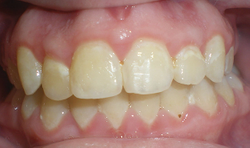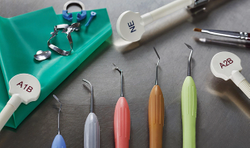- About Us
- Advertise
- Editorial
- Contact Us
- Terms and Conditions
- Privacy Policy
- Do Not Sell My Personal Information
© 2025 MJH Life Sciences™ and Dental Products Report. All rights reserved.
Through the looking glass, into the unknown
Reopening offices is forcing dental practices to discover uncharted terrain.
For now, we see through a glass darkly; but then face to face.” With all apologies to St. Paul, truer words might never have been spoken. As regular readers of this column will know, I love to talk about change in our profession and all the excitement that normally comes with it. Yet, as much as it pains me to say this, sometimes change is not exciting; sometimes it’s scary. This appears to be one of those times.
We are suddenly seeing massive changes in our profession to keep our patients, our teams, and ourselves as secure as possible from SARS-CoV-2.
Probably the perfect solution to this would be to simply press “pause” on dentistry and wait for the science to catch up. Unfortunately, the problems our patients trust us to deal with couldn’t care less and won’t wait for the science to catch up. They will continue to wreak havoc on our patients until we can return and get things back under control.
My office did not reopen until May 18, which meant I had not done an elective procedure for almost 60 days. During the pandemic shut down, I treated emergencies only for that time and had chosen to work alone in an effort to decrease the number of potential exposures and to conserve PPE. I couldn’t even remember how long it had been since I had worked without an assistant. Amazingly enough, I didn’t struggle nearly as much as I had anticipated. Granted, I was only seeing emergencies and only treating as little as possible to get the situation stabilized, but it also made me appreciate how important my dental assistants are to the equation. There is a reason it’s referred to as a “team”-something every doctor needs to remember.
Into the Great Unknown
Now here comes the tricky part. Dentistry is an evidence-based scientific profession, and it tends to attract people who want to see proof. In Dental Products Reports’ recent Technology and Materials Survey, 54.09 percent of respondents classified themselves in the category, “I’m a researcher. I need to see clinical studies, hands-on demos, etc.” That’s a good thing. Our patients definitely do not want someone who is just “winging it.” But that’s the crux of the problem we are currently facing in our profession. We just don’t have enough scientific information to be able to act with steadfast assurance.
As I type this, the Centers for Disease Control (CDC) has not updated its recommendations for dental treatment since April 27. The American Dental Association has requested that the CDC update its guidance for dental personnel returning to work, but that information appears to be slow in arriving. The current CDC guidelines still encourage the postponement of elective dental procedures, but at least 28 states are now reopening. That means 28 states have cleared dental offices to open again and begin seeing patients for elective procedures. (Editor’s Note: The CDC finally released updated recommendations for dental settings on May 19.)
While I understand the science is lagging in the battle against COVID-19, at some point the specialists in infectious disease and epidemiology will have to take their best shot at this. I cannot say with any degree of certainty, but it’s certainly starting to look like everyone is so concerned about making the wrong recommendations, that no one will make a recommendation at all.
Because of that, we are approaching three weeks of some offices performing elective procedures and being forced to use a “best guess” scenario.
Place Your Bets
As we all either proceed with treating or proceed with getting ready to treat, the question I am hearing the most among dentists is, “What are you doing for infection control?”
That simple question is an indication of the difficult position we, as doctors, find ourselves in during this pandemic. I was in dental school when Universal Precautions went into effect. That’s obviously been a while, but I don’t remember there being much confusion regarding the changes that were being made.
On the other hand, the current situation is rife with questions. So, what do we do? First of all, let me say so that everyone knows, I am not an infectious disease expert. I’m going to throw out a few ideas here. I’m doing this as an effort to get us all thinking-look upon it as a discussion we might have at a meeting in the bar after dinner.
Masks are certainly going to be a major priority. I’d be willing to bet that most of us now know more about masks than we ever expected in our career. N95s are the best option, but you don’t need to be in healthcare to know they are in short supply. There are other versions available from countries outside the U.S., such as the KN95 from China, which are supposed to be identical to the U.S. N95.
However, with the demand for respirators has come dishonesty. It’s now become known that some masks sold as KN95 are counterfeit. The U.S. had originally approved 80 overseas companies to provide N95-equivalent masks, but then had to prohibit 65 of those companies from selling masks for medical use. This happened after the federal agencies testing these masks had known of the failures for three weeks. When I found out about this I was outraged, and I feel you should be as well. Heaven only knows how many of those masks were used in that three-week span and how many of our medical colleagues had their lives put at risk because of it.
Many offices plan to ration these high filtration masks until the supply chain stabilizes. This is done by using one high filtration mask per day and then covering it during use with a separate Level 3 mask. The Level 3 masks can be changed as needed throughout the day. At the end of the day the N95 (or KN95) is placed inside of a paper bag and allowed to sit for 5 days. After the five-day span, the CDC considers them ready to wear again.
Gowns have also become a sought-after item. Whether disposable or reusable is up to the office, but “gowning up” will become a part of standard operating procedures for the foreseeable future. These should be waterproof and should protect underlying garments as much as possible. Some disposable gown manufacturers switched over to making masks due to demand, which has now created a disposable gown shortage.
"We are going to have to be even more vigilant about our inventory control. Running out of critical PPE could stop treatment in its tracks.”
Hair bonnets have been discussed a lot and no one seems to have a really good answer as to whether or not they are needed. The normal “gauze” types certainly won’t prevent virus penetration, but some individuals feel better with them during treatment. Perhaps the best option for those who desire to cover their hair are the good old fashioned shower caps. These are basically a thicker ply plastic bag with elastic. While these would keep viruses out, they will also be very warm for those who choose to wear them.
Face shields are also a popular option. While the CDC is currently advising either safety glasses, goggles, or a face shield, many are choosing to wear glasses and a face shield. The problem with face shields is that most are not very compatible with magnification. More than 80 percent of doctors are currently wearing some type of magnification and fitting a plastic shield over almost all of them is difficult if not impossible. Adding to the problem is the fact that most wearing magnification also have a light attached to the glasses. This makes the mask even more difficult to fit, while also creating reflection problems as the light bounces off the mask and reflects back into the user’s eyes.
And That Isn’t All
Then let’s add in the temperature factor. All of this PPE is going to surround us with non-breathable materials. Viruses cannot get in, but the tradeoff is that heat cannot escape. We are going to get very hot. Spending hours wrapped in layers of insulating materials is no one’s idea of a good time.
Plus, we are going to have to be even more vigilant about our inventory control. Running out of critical PPE could stop treatment in its tracks, meaning we’ll have to be hyper aware of inventory levels. Also, because the supply chain is so out of sync, we can’t just pick up the phone and place an order with the expectation it will arrive in a day or two. We’ll have to scour all available supply channels in an attempt to find items that are in stock and purchase before those items are sold out. This is going to require a careful balancing act that we’ve never had to perform before.
Wrapping Up
Is this going to be difficult? Absolutely. However, we’ll get through it. Dentistry may not have faced this kind of challenge before, but we’ve faced challenges in the past and we prevailed. I’m no happier about the current situation than any of you, but as my grandfather used to say, “Son, if it was easy, everyone would be doing it.” Here’s to doing what is NOT easy. See you on the other side.

 Download Issue: Dental Products Report June 2020
Download Issue: Dental Products Report June 2020

